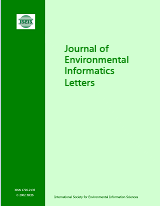doi:10.3808/jeil.202000046
Copyright © 2024 ISEIS. All rights reserved
Implications of Pulp and Paper Mill Primary Sludge Incineration versus Use in Composites Production: Decision-Making Based on Life Cycle Assessment
Abstract
This paper assesses the environmental consequences of diverting primary sludge from its conventional end-of-life option-incineration-to its use in the production of composites. The study focuses on the environmental consequences of possible decision making rather than simply accounting for the environmental impacts. The study identified that, despite primary sludge incineration has a small climate change impact of 0.01 kg CO2-eq. per functional unit of 0.44 kg of primary sludge, primary sludge utilization in the production of composites is a more environmentally friendly option. This is due to a high reduction potential of climate change and abiotic resources consumption through the substitution of virgin plastic of 2.5 kg CO2-eq. even if the composite production has a higher impact of 1.3 kg CO2-eq. compared to incineration of the sludge. However, sensitivity analysis showed that the production of composites replacing plastics is only a better alternative for as long as virgin plastic is substituted at the minimum ratio of 1: 0.7. The low substitution rate is possible if the properties of the produced composites or their functionality is worse than those of virgin plastic. In such cases, incineration of primary sludge is a better alternative.
Keywords: carbon footprint, consequential analysis, decision-making, life cycle assessment, polymer composites, primary sludge, pulp and paper industry, sludge-polymer composites
Supplementary Files:
Refbacks
- There are currently no refbacks.
